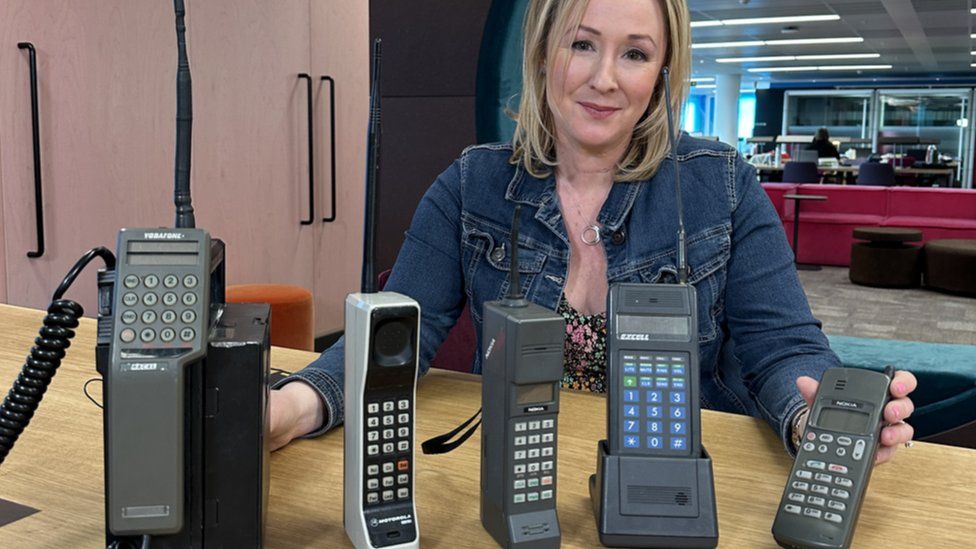2″ April “2023

In celebration of the 50th anniversary of the first cell phone call, Martin Cooper, 94, talks about how his invention changed our lives.
On 3 April 1973, Marty Cooper stood on a corner of Sixth Avenue in New York and took a phone book from his pocket.
He then punched a number into a large, cream-coloured device and put it to his ear while passers-by stared at him.
Mr Cooper, an engineer at Motorola, rang his counterpart at rival firm Bell Laboratories, to triumphantly tell him he was calling from “a personal, handheld, portable cell phone”.
Bell Laboratories had been focusing on developing a car-based phone instead, he says. “Could you believe that? So we had been trapped in our homes and offices by this copper wire for over 100 years – and now they were going to trap us in our cars!”

Mobile phone inventor made first call 50 years ago
Needless to say, Mr Cooper and Motorola did not agree this was the way forward – and history has proved them right.
The basics of how that first call worked haven’t changed much. The phone converts your voice into an electric signal, which modulates a radio wave. The radio wave goes to a mast; the mast sends your voice to the person you are calling, and by reversing the process, that person can then hear you speak.
Except there weren’t really many masts back then… But you get the idea.
Today’s mobile phones, however, are unrecognisable when compared with that early Motorola model.
The commercial version of Marty Cooper’s prototype, the Motorola Dynatac 8000X, was released 11 years after that first call, in 1984. It would cost the equivalent of £9,500 ($11,700) if bought today, says Ben Wood, who runs the Mobile Phone Museum.
“Basically, it was just dial the number and make the call,” Mr Wood explains.

“There was no messaging, no camera. Thirty minutes of talk-time, 10 hours to charge the battery, about 12 hours of stand-by time and a 6in (15cm) antenna on the top.”
A commercial version of the Motorola phone, first used by Mr Cooper, is owned by the Mobile Phone Museum
However, Mr Cooper remains unimpressed with the design of the handsets of 2023 – although he concedes he never predicted phones would one day be handheld “supercomputers”, with cameras and internet access.
How a comic book character sparked the idea
By the late 1960s, Cooper had been working in the two-way radio business for almost two decades. He developed the first radio-controlled traffic light system and handheld police radios. But Cooper’s career field was not all that exciting to him until the comic book detective Dick Tracy gave him an idea.
Dick Tracy could communicate with police through his wristwatch, and Cooper wondered if telephones could work similarly — if they could be cordless, small, and carried around everywhere we traveled. He decided then to design and engineer the first ever cell phone known to man.
Cooper had convinced Motorola, a small telecommunications company at the time, to support his idea. Three months later, Cooper and a team of engineers had created a phone nicknamed “The Brick.” It was huge, chunky, and weighed about two pounds.
“I think today’s phone is suboptimal. It’s really not a very good phone in many respects,” he says.
“Just think about it. You take a piece of plastic and glass that’s flat – and you put it against the curve of your head; you hold your hand in an uncomfortable position; when you want to do these wonderful things that it can do, you have to get an app [first]. “
He believes, in the future, artificial intelligence will either create, or select, phone owners’ apps for them, depending on their individual needs.
He also believes one day the device will monitor our health, maximise our productivity and improve our lives immeasurably.
At one point he even suggests they might help eliminate wars.
“The cell phone is not going to do it by itself,” he admits. “But it will be the central part of this great future.”
Despite his complaints about its modern counterparts, it seems, secretly, Mr Cooper remains enthralled by the device he first held to his ear on that New York street corner 50 years ago.
“We are still at the very beginning of the cell phone revolution,” he declares

